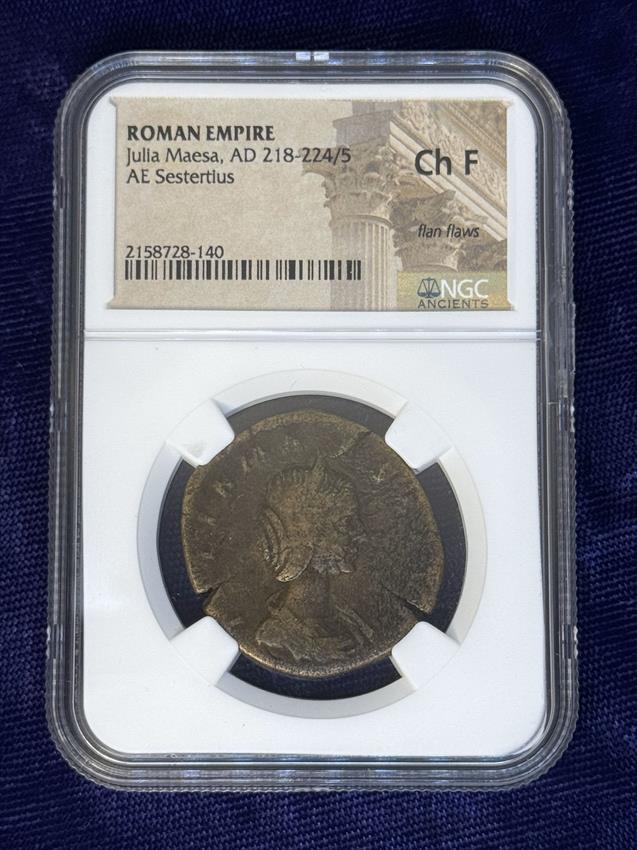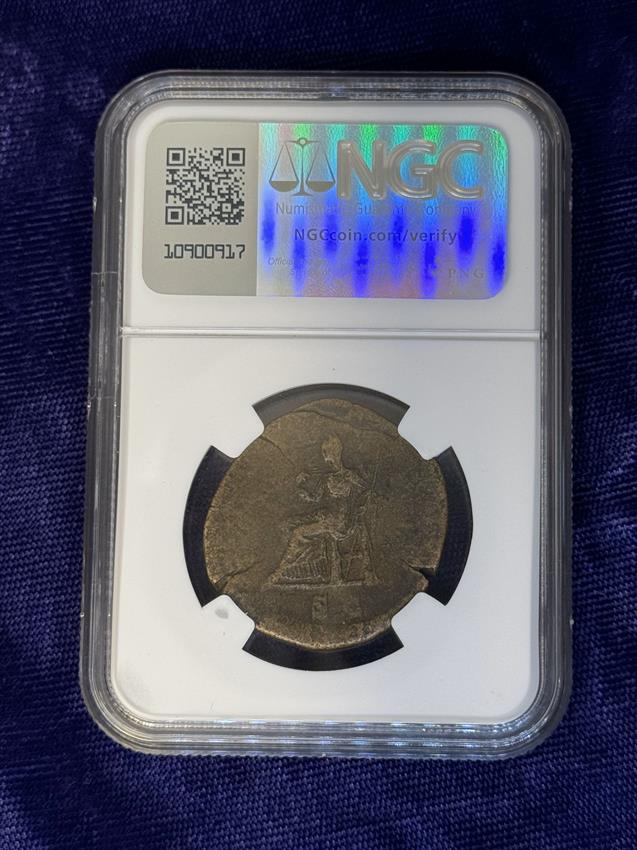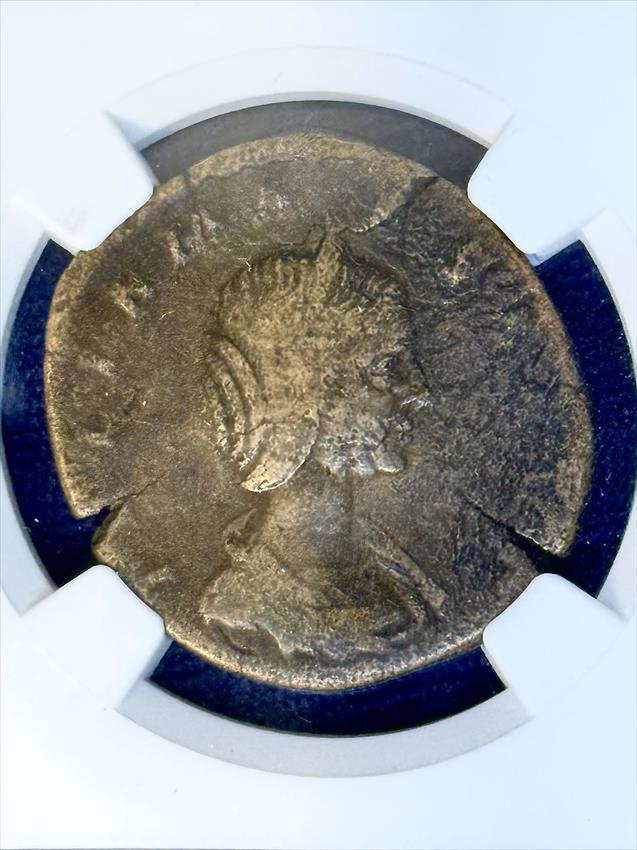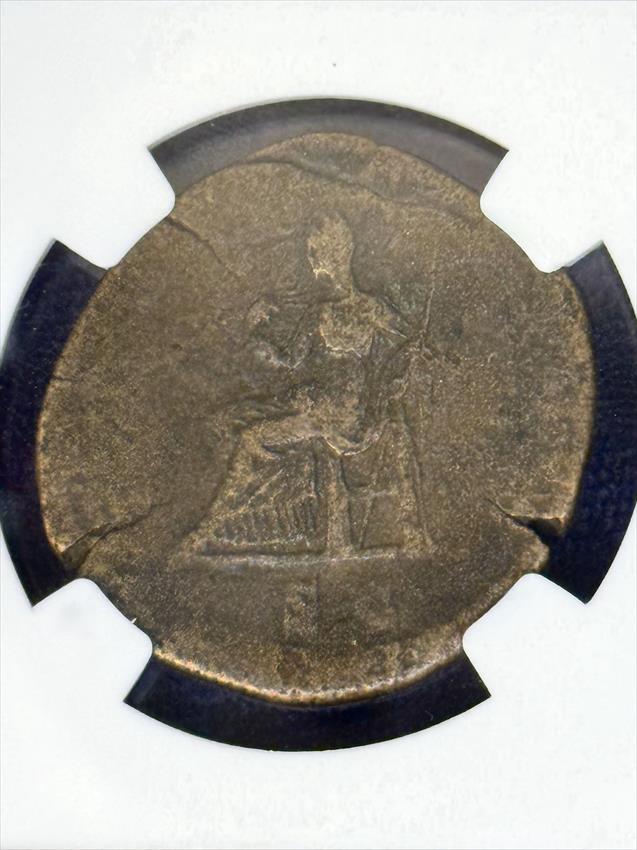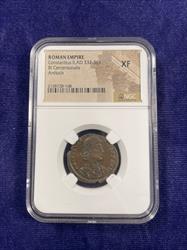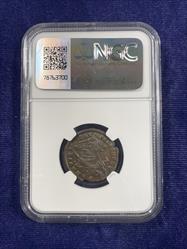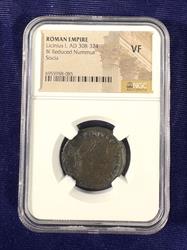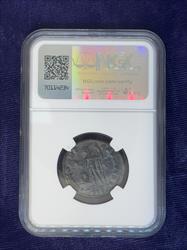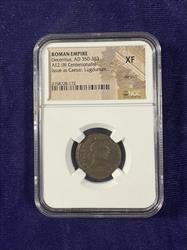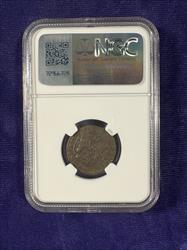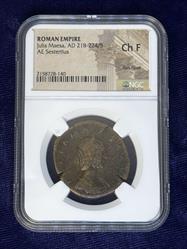
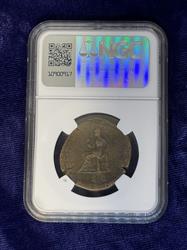
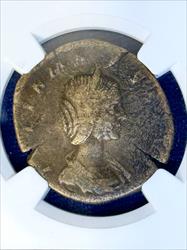
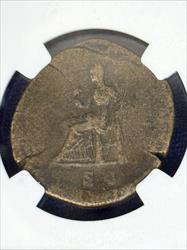
Julia Maesa AE Sestertius AD 218-224/5 *flan flaw* Ch F
| Quantity | Check/Wire | Credit Card |
|---|---|---|
| 1+ | 150.00 | 154.88 |
- SKU: BFB005505
- Categories: ANCIENTS ROMAN ROMAN EMPIRE
Sestertius means “two and a half” in Latin, in reference to its value being worth two and a half asses. By extension, four sestertii were equivalent to one denarius. In the Roman Republic, the sestertius was a small silver coin. In the Roman Empire, it was a large brass coin.
Julia Maesa was born in Emesa, Syria (modern-day Homs) sometime before 160 AD. Her sister, Julia Domna, married then-senator Septimius Severus. In 193, Severus became emperor and her sister became empress. This prompted Maesa to move her husband and daughters, Julia Soaemias and Julia Mamaea, to Rome. She and her family rose to political and financial prominence, both in Severus’s court and his son Caracalla’s. However, Caracalla was murdered in 218 and the new emperor, Macrinus, ordered Maesa and her family to leave Rome. Back in Emesa, she found others loyal to the Severan dynasty and plotted to challenge Macrinus. She claimed that Soaemias’s son, Varius Avitus Bassianus (also known as Elagabalus), was actually the illegitimate son of Caracalla. With help from others in Emesa and potentially Rome, the Emesan legion proclaimed Elagabalus the new emperor. Other army divisions joined Elagabalus’s forces, likely because they were unhappy with their pay under Macrinus. Macrinus and Elagabalus met in the Battle of Antioch in 218. When some of Elagabalus’s troops began to retreat, Maesa and Soaemias joined the battle, rallying the troops and renewing their offensive. Macrinus fled, but was captured and executed later, and Elagabalus became the new emperor. Some people believe Maesa and Soaemias all but ran the empire themselves, but at the very least, the two women influenced the emperor. When Elagabalus was assassinated in 222, her other daughter’s son, Severus Alexander, took the throne. Again, Maesa held influence over the emperor, as did Julia Mamaea. She died sometime between 224 and 227, leaving Mamaea to guide Severus Alexander by herself.
This coin was graded Ch F (choice fine) by the Numismatic Grading Company, the official grading service of the American Numismatic Association and the Professional Numismatists Guild. Here is a list of grades used by the NGC, as well as information about Strike, Surface, and Style ratings. This coin has a flan flaw (aka planchet flaw), meaning the flan has cracks, or was not prepared properly which led to visible imperfections in the coin’s metal.
Obverse: IVLIA MAESA AVGVSTA, diademed and draped bust right
Reverse: PVDICITIA S C, Pudicitia seated left, raising right hand to adjust veil and holding scepter in left hand
Reference: RCV 7764, RIC 420

